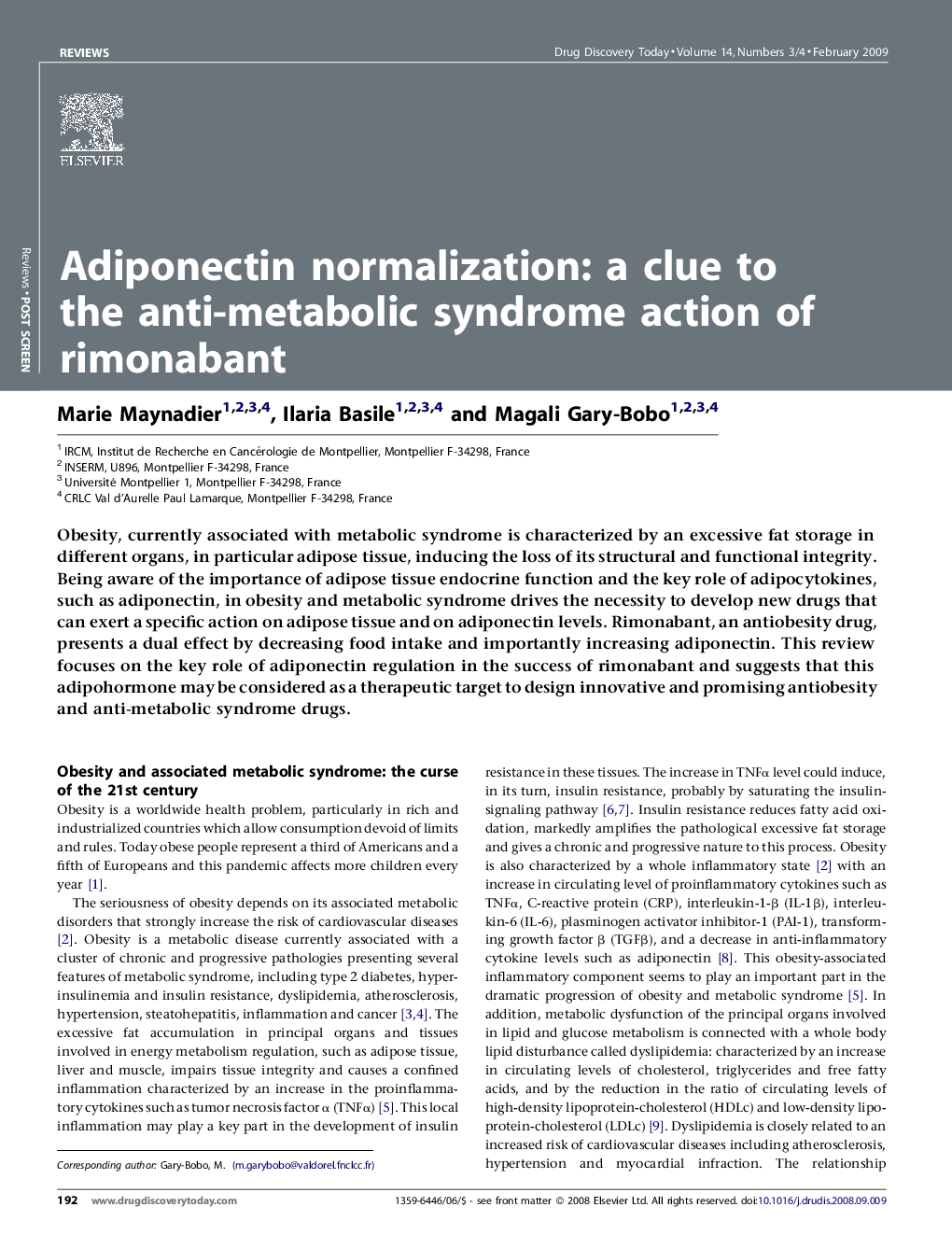| کد مقاله | کد نشریه | سال انتشار | مقاله انگلیسی | نسخه تمام متن |
|---|---|---|---|---|
| 2080460 | 1545176 | 2009 | 6 صفحه PDF | دانلود رایگان |

Obesity, currently associated with metabolic syndrome is characterized by an excessive fat storage in different organs, in particular adipose tissue, inducing the loss of its structural and functional integrity. Being aware of the importance of adipose tissue endocrine function and the key role of adipocytokines, such as adiponectin, in obesity and metabolic syndrome drives the necessity to develop new drugs that can exert a specific action on adipose tissue and on adiponectin levels. Rimonabant, an antiobesity drug, presents a dual effect by decreasing food intake and importantly increasing adiponectin. This review focuses on the key role of adiponectin regulation in the success of rimonabant and suggests that this adipohormone may be considered as a therapeutic target to design innovative and promising antiobesity and anti-metabolic syndrome drugs.
Journal: Drug Discovery Today - Volume 14, Issues 3–4, February 2009, Pages 192–197